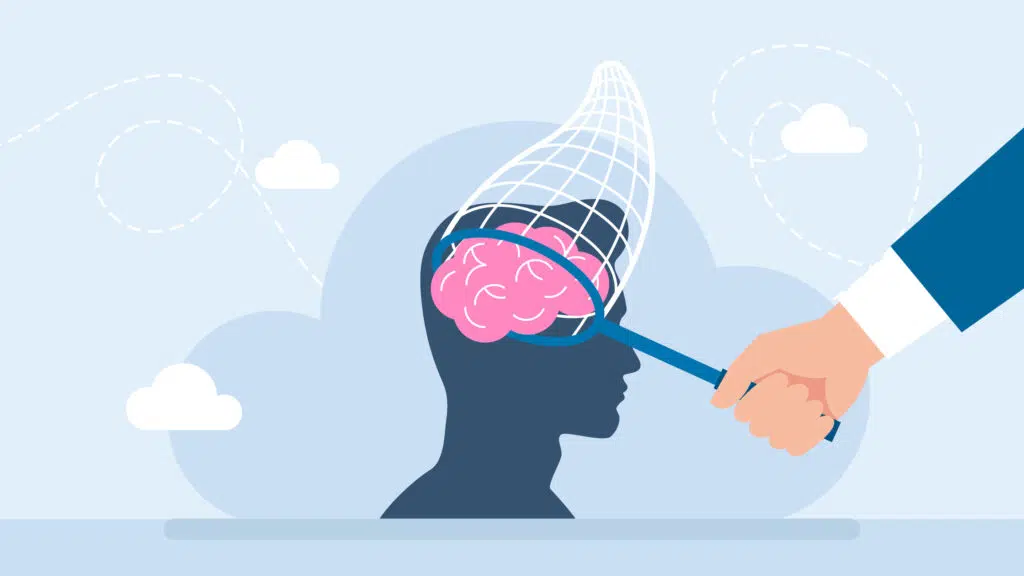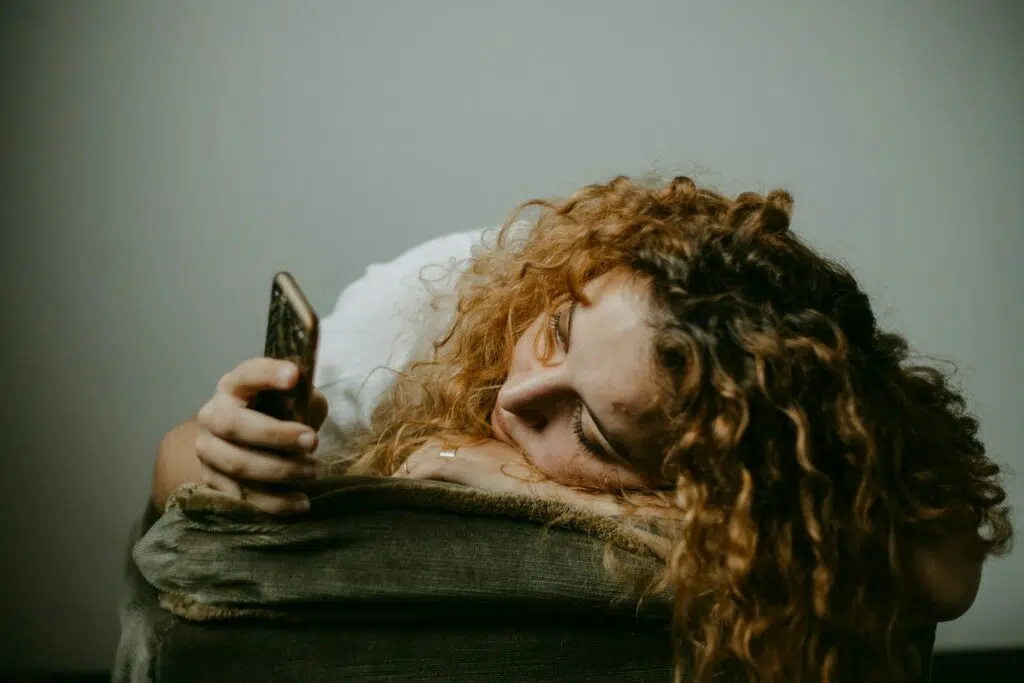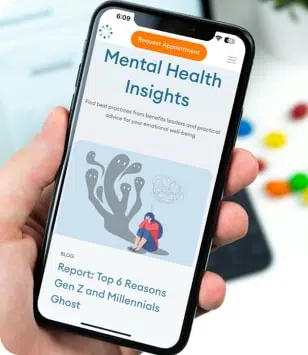How To Manage Intrusive Thoughts

Intrusive thoughts are sudden and come out of nowhere. They are unwanted thoughts that can be disturbing or strange that seemingly pop into your head. Intrusive thoughts can be upsetting and are commonly associated with mental health disorders like anxiety and obsessive-compulsive disorder (OCD). Sometimes it can feel like the more you push intrusive thoughts away, the stronger they become. In this article, we will talk about how to manage intrusive thoughts, how to recognize them, and when to get help.
Recognizing and Identifying Intrusive Thoughts
So, how do you tell the difference between regular thoughts and intrusive thoughts? It’s normal to have thoughts run into your head without you making a conscious effort. Maybe it’s remembering to do something you forgot. But, for some people, thoughts can be hurtful, disturbing, unwanted, and hard to shift. It’s more than an odd thought that pops into your head; it can feel distressing and may even involve something violent or sexual.
There are several types of intrusive thoughts. The primary theme of intrusive thoughts is that they are unwanted, but this can look different for anyone. Examples of common intrusive thoughts include:
- Fear that a loved one is going to get sick or die
- Thoughts about self-harm and suicide
- Worry that you will do something dangerous or illegal
- Aggressive thoughts
- Thoughts on sexual acts such as acting innapoariately
Remember that intrusive thoughts are not a signal that you wish to do something; they are unwanted and not aligned with your morals, values, and beliefs. Within the umbrella of intrusive thoughts, you can also experience images, sensations, stories, and memories. All of these elements can be part of intrusive thoughts, making intrusive thoughts look different for a lot of people.
Understanding Intrusive Thoughts and Their Impact on Mental Wellbeing
Intrusive thoughts are associated more with conditions such as OCD. People with OCD tend to give these thoughts more power. So, instead of thinking it was a bit of a strange thought and moving on, they might think, “What does it mean, and why am I having these thoughts?” If you start to engage with the thoughts and try to figure out what they mean, it can do more harm than good.
Typically, someone with OCD would have an intrusive thought that’s followed by a compulsion. The intrusive thought is the obsession, and the compulsion is the action a person performs to relieve stress. When OCD becomes too much, you can find yourself in a cycle where it’s difficult to perform simple daily tasks as OCD rituals take up so much time.
Intrusive thoughts can be caused by stress or anxiety or can be a symptom of one or more health issues, such as:
- OCD
- Anxiety disorder
- PTSD
- Postpartum depression
- Brain injury
- Eating disorders
- Depression
Often, intrusive thoughts become more of a problem when they keep coming back. It’s not something you think of and then forget about. You just can’t stop the unwanted thought from returning. The unwanted thoughts linger and cause you distress and anxiety over time. Many people keep intrusive thoughts to themselves as they find them embarrassing or could be ashamed. However, intrusive thoughts can be a sign that you may need to speak to a mental health professional who can determine the best treatment so you can start to feel more like yourself again.
Practical Techniques to Manage Intrusive Thoughts
Instead of fighting intrusive thoughts, it’s important to gain an awareness of thought patterns so you can take a step toward breaking the cycle. The more you fight them and engage with intrusive thoughts, the louder they can get. Intrusive thoughts can become a daily challenge. Your intrusive thoughts don’t make you a bad person, and, in most cases, you can find a way to manage them and regain control.
- Mindfulness and Meditation Practices for Thought Awareness
When an intrusive thought arises, it’s essential to recognize and identify that it’s precisely that, an intrusive thought. An important element of meditation is observing your thoughts and letting them glide past you without judgment or getting too preoccupied with them. One part of coping with intrusive thoughts involves using meditation in a way that doesn’t deny your thoughts but also doesn’t give them too much power, allowing you to remain more present.
- Journaling and Writing Exercises for Processing Thoughts
For some, journalling is a great tool for stress management and for expressing emotions and thoughts throughout the day. The idea is that you can help clear your mind of intrusive thoughts through journaling and writing exercises. Write out your intrusive thoughts, challenge them, and keep track of how you feel at the time of the intrusive thought.
- Self-Care Practices to Promote Overall Mental Well-Being
Self-help techniques for coping with intrusive thoughts include journalling, meditation, and also looking after your well-being. Self-care for OCD and other mental health conditions often includes getting enough sleep, managing stress, thinking about healthier food choices, and exercising regularly. Looking after your physical health is crucial when dealing with stress and daily challenges.
- The Role of Professional Help: Therapy Options and Support Systems
While it’s important to develop stress management techniques and self-care routines, professional treatment works alongside these elements. Treatment for intrusive thoughts or mental health conditions like OCD may include lifestyle recommendations in addition to therapy with a mental health professional and, in some cases, medication.
If you feel like intrusive thoughts keep coming back, it may be helpful to speak with a therapist. Therapy for intrusive thoughts typically uses cognitive behavioral therapy (CBT) to shift your way of thinking. Over time, the aim of CBT is to gradually desensitize you to intrusive thoughts and learn to react differently. In a controlled environment, your therapist may expose you to certain triggers that bring on your intrusive thoughts to help you learn to cope in a healthier way.
Taking Steps Towards Managing Intrusive Thoughts and Cultivating Mental Resilience
If you feel like intrusive thoughts are interfering with your daily life or ability to work, it may be time to speak with a therapist. Even if your intrusive thoughts don’t affect your day-to-day life, you could still benefit from speaking with a mental health professional.
You don’t need to go through it alone, a professional can help you to learn to deal and cope with intrusive thoughts. Whether you have OCD or dealing with stress, anxiety, or any mental health issue, speaking with someone can help you to find the treatment you need.
Treatment for intrusive thoughts teaches you the tools to cope so that when faced with an intrusive thought, you recognize the thought for what it is, accept that you have it, and understand they are not relevant to your daily life. It’s easy to think that treatment for intrusive thoughts would involve suppressing and pushing away the thoughts, but the aim is to accept them and move forward in the present without judgment or engaging with them.
In some cases, intrusive thoughts can be caused by mental health conditions, but for others, the exact reason isn’t always clear. At Thriving Center of Psychology, we have a team of mental health experts to help you. Whether you need to speak with a psychiatrist or therapist, we can help support you on your journey to better mental health. Book an appointment online or call our office today. We have locations in major cities, including New York, LA, Miami, and Chicago.

The Link Between Social Media and Depression
In today’s world, scrolling through social media is as routine as brushing our teeth. We open apps out of habit — on the train, in bed, while waiting in line. Platforms like Instagram, TikTok, and Facebook keep us connected, informed, and entertained.

Signs Depression is Taking a Toll on Your Relationship
Depression can impact every part of a person’s life, from their work to their romantic relationships. Dealing with depression can take its toll on both the person with depression and the supporting partner. If you’re worried that depression is affecting your relationship, understanding its impact is an important first step.

Anxiety Attack and Panic Attack Differences
’s easy to mix up anxiety and panic attacks. While anxiety attacks and panic attacks do have overlapping symptoms, they are different. Let’s get into the differences between anxiety and panic attacks so you can be in a better position to get the help you need.

How to Overcome Procrastination and Anxiety
Procrastination is a very typical human experience. At some point or another, we’re all guilty of putting off that task we know is important. Maybe it’s household chores, filling your taxes, paying bills, or some other mind-numbingly boring task.




